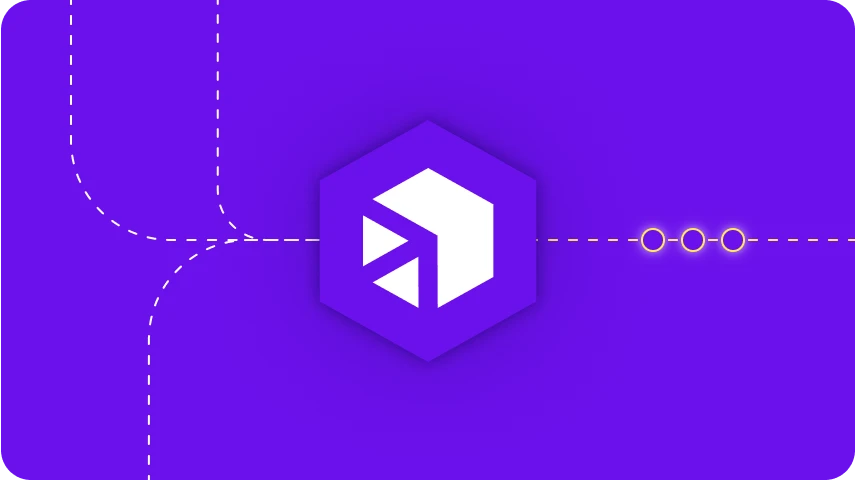dezembro 28, 2022
Houve um tempo em que usar a nuvem era uma ideia inovadora para as empresas. Mas a evolução da tecnologia segue em frente, levando consigo o mundo corporativo. Simplesmente armazenar dados organizacionais na nuvem ou usar uma solução “como serviço” baseada em nuvem não é mais suficiente. Cloud-native é a nova nuvem. Mas por que o nativo da nuvem é importante?
>> Agende uma demonstração personalizada com nossa equipe de especialistas e veja como o iPaaS da Digibee trará eficiência ao seu negócio.
O que é Cloud Native?
O termo cloud-native refere-se ao foco de hoje em projetar e construir aplicativos de software especificamente para viver e rodar na nuvem – em oposição a um data center no local – para alavancar a flexibilidade, escalabilidade e resiliência que a nuvem oferece. A estratégia surgiu entre os nativos digitais – organizações formada para fazer negócios exclusivamente online – e tornou-se um fator crítico na forma como as empresas inovam, crescem e competem.
As estratégias nativas da nuvem permitem que as empresas percebam mais vantagens da nuvem do que as técnicas tradicionais de “lift and shift”, que simplesmente realocam os sistemas para a nuvem sem adaptá-los para aproveitar todos os benefícios que a nuvem pode oferecer. À medida que os aplicativos se tornam mais complexos para atender às crescentes expectativas dos usuários, uma abordagem nativa da nuvem facilita respostas rápidas a novas tendências e mercados em constante mudança.
Nativo da nuvem versus baseado na nuvem
Ainda tentando descobrir o que significa baseado em nuvem? Aqui está uma maneira fácil de diferenciar:
Nativo da nuvem
Os aplicativos nativos da nuvem são criados especificamente para serem executados na nuvem, aproveitam suas características exclusivas e se adaptam a ambientes de nuvem dinâmicos.
Baseado em nuvem
Os aplicativos baseados em nuvem são projetados para serem executados na nuvem, mas não são criados para aproveitar todos os seus benefícios.
O desenvolvimento de aplicativos nativos da nuvem geralmente apresenta quatro pilares principais:
- Microsserviços: Grandes projetos são construídos como um grupo de componentes modulares
- Conteinerização: Os aplicativos são virtualmente empacotados e isolados para implantação
- Entrega contínua: O código é construído e testado em ciclos curtos e contínuos
- DevOps: Uma metodologia voltada para melhorar a colaboração entre as equipes de desenvolvimento e operações
Por que o Cloud Native é importante?
Agora que você sabe o que é o nativo da nuvem, vamos falar sobre por que o nativo da nuvem é importante. A resposta curta é que ele capacita sua organização a atingir metas de transformação digital e oferece suporte a novas iniciativas de negócios, aproveitando os muitos benefícios da nuvem.
Mas o que isso realmente significa? E como a arquitetura nativa da nuvem faz essas coisas acontecerem? É mais fácil entender quando você começa a examinar as maneiras individuais pelas quais a nuvem nativa beneficia seus negócios.
Os 8 principais benefícios da arquitetura nativa da nuvem
1. Elimine dependências de aplicativos
A arquitetura nativa da nuvem facilita o desenvolvimento de aplicativos independentes de outros aplicativos, permitindo que as equipes de desenvolvimento criem e implantem aplicativos conforme necessário, sem o incômodo e o custo de tentar implantar todos os ativos do sistema de uma só vez.
2. Reduza o aprisionamento do fornecedor
Os serviços nativos de nuvem geralmente são baseados em código-fonte aberto ou tecnologia baseada em padrões, o que os torna mais portáteis e permite que as empresas mudem de solução quando suas necessidades (ou ofertas de fornecedores) mudam.
3. Minimize o tempo de inatividade
A natureza conteinerizada dos aplicativos nativos da nuvem reduz drasticamente o tempo de inatividade associado a atualizações planejadas e desastres ou ataques inesperados. As soluções nativas da nuvem são projetadas para permitir que desenvolvedores ou profissionais de segurança transfiram aplicativos em contêineres para locais alternativos, conforme necessário.
4. Simplifique o gerenciamento de infraestrutura
Outro benefício da nuvem nativa é que os requisitos de gerenciamento de infraestrutura diminuem significativamente. Não há necessidade de configurar redes locais, planejar armazenamento ou provisionar instâncias de nuvem. Esta simplificação reduz o tempo que sua equipe de TI deve gastar em manutenção e os libera para se concentrar em tarefas mais valiosas.
5. Cortar Custos
Os modelos tradicionais de trabalho no local fazem com que as empresas gastem grandes porções de seu orçamento de TI na infraestrutura – muitas vezes sem utilizar totalmente sua capacidade. A arquitetura nativa da nuvem exige apenas que você pague pela capacidade que usa e (como mencionado acima, reduz o tempo gasto em manutenção).
6. Aumente a Agilidade e a Flexibilidade
Os aplicativos nativos da nuvem geralmente são menores do que seus equivalentes tradicionais, o que os torna mais fáceis de criar, implantar e atualizar conforme necessário. Os recursos de automação DevOps que eles usam permitem a entrega contínua de atualizações sem interromper os usuários finais.
7. Melhore a experiência do cliente
Quando sua empresa pode implantar e atualizar aplicativos mais rapidamente em resposta às crescentes demandas dos clientes, você oferece uma experiência centrada no cliente superior que manterá seus clientes satisfeitos e leais.
8. Reduza o tempo de lançamento no mercado
A capacidade de lançar novos produtos ou serviços no mercado com mais rapidez é uma das principais metas de negócios e um dos benefícios mais importantes da nuvem nativa. A agilidade, a flexibilidade e os requisitos de manutenção reduzidos associados aos aplicativos nativos da nuvem aumentam o tempo que os desenvolvedores podem dedicar à inovação e reduzem o tempo necessário para lançar novas ofertas.
Deixe a Digibee apoiar sua transformação digital
O iPaaS independente de dados e sistemas da Digibee pode ajudá-lo a integrar seus aplicativos e arquitetura modernos nativos da nuvem com sistemas legados e dados isolados – sem problemas, com zero tempo de inatividade e mais rápido do que outras soluções de integração. Agende uma demonstração sem compromisso hoje para saber como podemos ajudar sua organização.









